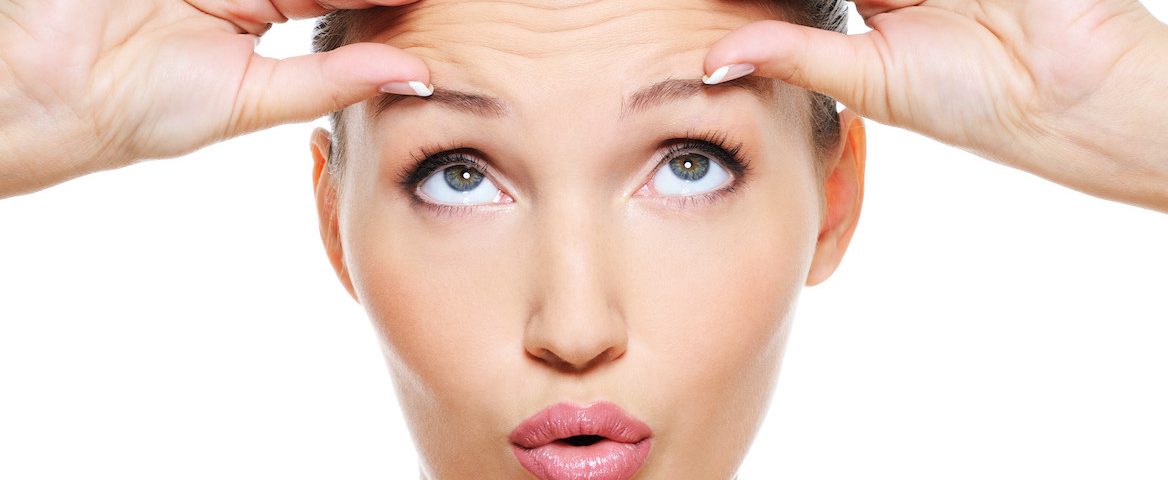- Aesthetic Medicine New Malden
- 020 8942 5901
- admin@simply-skin.com
Are Botulinum Toxin Wrinkle Injections Safe?
Are Botulinum Toxin Wrinkle Injections Safe?

Botulinum Toxin wrinkle reduction injections have become an important part of the way we hold back the signs of ageing. But how safe are these injections? What do we need to be aware of before deciding wether or not to undergo BOTOX?
Botulinum toxin is used in the medical management of a range of conditions including:
- Excess sweating
- Dynamic and static wrinkles
- Jaw clenching
- Calf muscle shaping
- Muscle over action (e.g. blepharospam)
- Migrane
But just how safe are botulinum toxin wrinkle reduction injections and when do they become unsafe?
What is Botulinum Toxin?
Botulinum Toxin (commonly referred to as Botox) is a temporary muscle-relaxing protein which can be injected into muscles.
What can Botulinum Toxin be used for?
Eliminate or prevent Forehead lines (worry lines)
Eliminate or prevent Frown lines
Eliminate or prevent Crow’s feet
Eliminate or prevent Bunny lines
Brow lift
Neck lift
Nasal tip lift (Botulinum Toxin rhinopexy)
Mouth lift
Hyperhidrosis (excessive sweating)
What are the benefits of Botulinum Toxin?
Botulinum Toxin can be used to soften and rebalance facial movements that have become habitual and repetitive over the years. This results in a more youthful, relaxed and vibrant appearance.
As well as being very effective at reversing the signs of aging, Botulinum Toxin can also be used as a preventative measure. From the mid-twenties onwards, Botulinum Toxin can be used to proactively prevent lines and wrinkles from forming.
What preparation is needed for Botulinum Toxin?
Enhance the effects of treatment by ensuring your skin is in prime condition, consider intensive skin reconditioning, chemical peel or laser resurfacing
Avoid aspirin or ibuprofen for 2 days prior to Botulinum Toxin treatment to minamise bruising (If you take aspirin for blood thinning purposes, please continue use)
Notify your aesthetic doctor of any facial cold sores prior to treatment
How is Botulinum Toxin administered?
An individualised treatment plan is prepared to determine the exact areas, which need to be treated and the doses of Botulinum Toxin needed.
The injection process takes approximately 10 – 15 minutes and involves a series of tiny injections into the muscles of the defined treatment areas. A very fine needle is used and discomfort is usually minimal and very brief. Pressure may be applied to the areas following injection.
What should I avoid following treatment?
Post-procedure instructions: –
Refrain from exercise / strenuous activity / sweating for 4 hours
Avoid lying completely flat for 4 hours
Avoid lowering your head below your heart for 4 hours
Avoid applying make-up to the treated area for 4 hours
Do not rub or massage the treated areas for 24 hours
Avoid any facial cosmetic procedures to the area for 24 hours
After 2 days once the effects are felt massage the treated areas of skin with your regular facial moisturiser
What can I expect following treatment?
Some bruising and swelling
Some tingling is normal after the procedure and should dissipate after a few hours.
Mild pain (should be easily be controlled with paracetamol)
Visible results are usually seen in 3-5 days. Patients should allow up to 2 weeks for the Botox to take full effect before evaluating final results.
What are the risks of Botulinum Toxin?
Your aesthetic medicine doctor will explain all the specific risks of Botox to a particular facial area in detail before you sign a consent form for treatment we have outlined the risks of Botox injections in general: –
Common
Swelling / bruising at the injection site: this is normal and should subside within a day or two. (Bruising in patients taking blood-thinning agents like clopidogrel or aspirin) may take several weeks to resolve.
Headache or flu-like symptoms: these tend to be mild and fade within days
Less common
The Botox may spread into adjacent tissues in the face depending on the area treated and can cause problems such as: –
Eyelid droop
Cockeyed eyebrows
Crooked smile
Dry eye or excessive tearing
Rare
There is a very small possibility that the effect of botulinum toxin may spread to other parts of the body and cause botulism-like signs and symptoms. You should attend accident and emergency if you notice any of the following symptoms: –
Muscle weakness all over the body
Vision problems
Trouble speaking or swallowing
Trouble breathing
Loss of bladder control
The injection of Botox in patients who are prone to herpes simplex (cold sores) may trigger an outbreak. Prophylactic treatment with anti-viral medications will be discussed with these individuals.
We do not treat pregnant or breast-feeding, since the effects on the baby aren’t known.
How many session of Botulinum Toxin will I need?
The amount of Botulinum Toxin necessary to obtain optimal results has great variation due to facial anatomy, gender, and lifestyle. Botox is a temporary treatment and should ideally be repeated every 3 – 4 months. Proactive and regular maintenance is key to achieving optimal results.
Muscles have ‘muscle memory’ and for many people, tight is the normal state of their facial muscles. Botox is very effective at retraining muscle memory. Through multiple Botox treatments, facial muscles can eventually forget their previous tight state. Instead, a more relaxed state becomes the new norm and this becomes evident in smoother skin.
